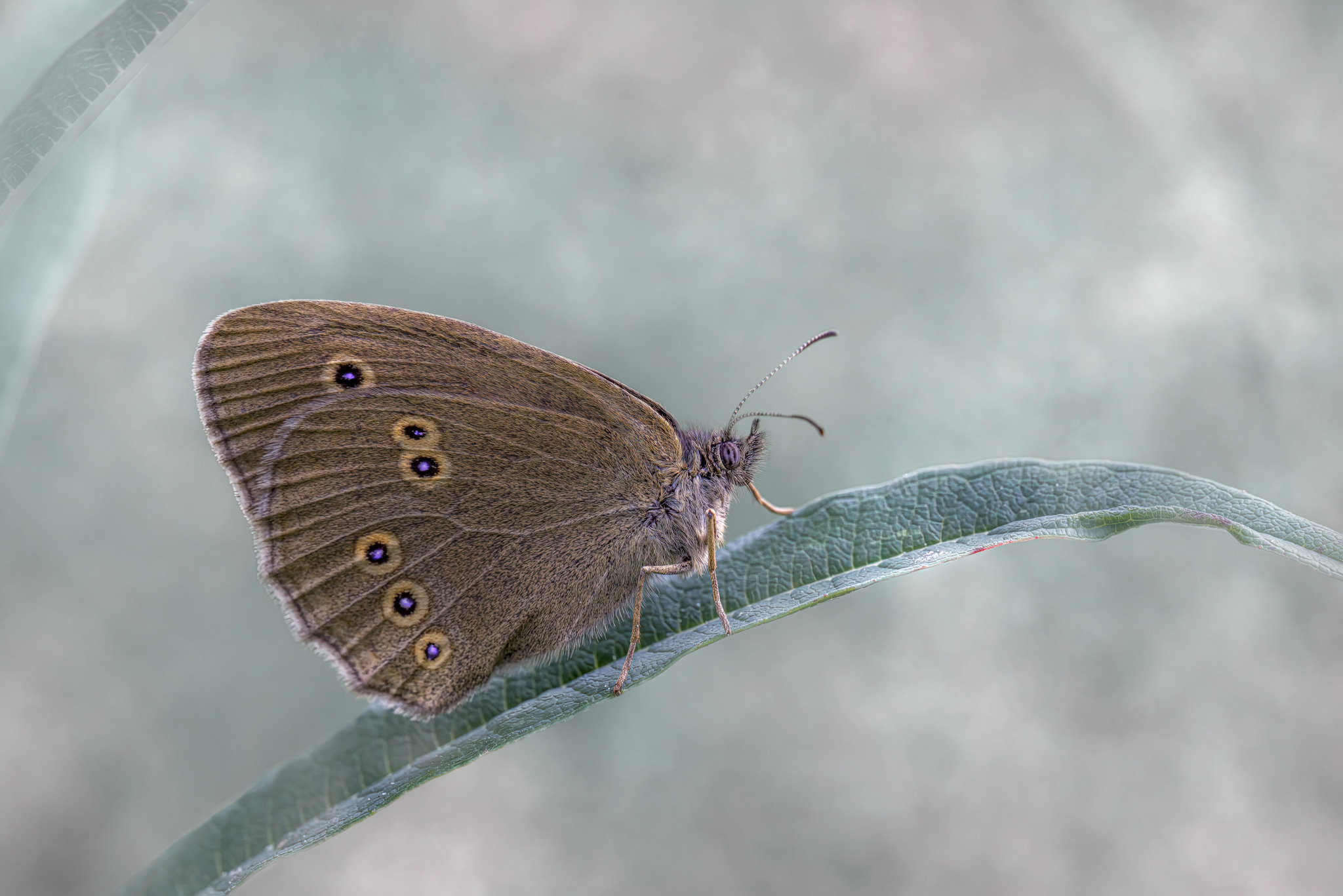Here’s a complete overview of the Ringlet butterfly (Aphantopus hyperantus), a common but fascinating grassland species in Europe and parts of Asia:
Ringlet (Aphantopus hyperantus)
Taxonomy & Classification
- Kingdom: Animalia
- Phylum: Arthropoda
- Class: Insecta
- Order: Lepidoptera
- Family: Nymphalidae (Brush-footed butterflies)
- Subfamily: Satyrinae (Browns)
- Genus: Aphantopus
- Species: A. hyperantus
- Common names: Ringlet, Ringlet Brown
General Description
- Wingspan: 42–52 mm.
- Appearance:
- Upperwings: Dark chocolate-brown to almost black, with a velvety texture.
- Underside: Lighter brown with distinctive ring-shaped eye spots (ocelli)—typically 3–5 per hindwing and 2–3 per forewing. These rings give the butterfly its name.
- Seasonal variation: Summer adults are often darker and more strongly marked than spring broods in warmer regions.
- Sexual dimorphism: Males are darker and slightly smaller; females show more prominent eye spots.
Behavior & Lifestyle
- Flight period: June to August (one brood per year in most of its range).
- Flight style: Slow, fluttering, often close to ground vegetation.
- Activity: Active even on dull, overcast days—unlike many butterflies.
- Feeding: Adults nectar on wildflowers such as bramble, thistles, knapweed, and meadow flowers.
- Resting behavior: Often perches with closed wings, showing the eye spots for protection against predators.
Life Cycle
- Eggs: Laid singly on grasses or dropped loosely among vegetation.
- Caterpillar (larva):
- Green with faint stripes.
- Feeds on grasses such as fescues (Festuca), meadow grasses (Poa), and couch grass (Elymus).
- Overwinters as a small larva, resuming feeding in spring.
- Pupa: Forms a chrysalis low down among grass stems, unprotected.
- Adult lifespan: Typically 2–3 weeks.
Habitat
- Prefers damp, shady meadows, woodland edges, hedgerows, clearings, and grassy rides.
- Found from lowlands to upland areas where moisture is retained.
- Strongly tied to grassland with tall vegetation.
Geographic Range
- Widely distributed across Europe (except parts of the Mediterranean), through central Asia, reaching as far east as Siberia and Japan.
- Absent from much of southern Spain, Italy, and Greece.
Ecological Role
- Pollinator: Feeds on a wide range of wildflowers, contributing to meadow pollination.
- Prey species: Eye spots help deter birds, but it is preyed upon by insectivorous birds, spiders, and predatory insects.
- Grassland indicator: Its presence signals healthy, semi-natural meadows and woodland edges.
Conservation Status
- IUCN Red List: Least Concern.
- Population trends: Widespread and often abundant. Declines locally due to habitat loss and agricultural intensification.
- Threats:
- Drainage of damp meadows.
- Overgrazing or intensive mowing of grassland.
- Conservation measures: Maintenance of traditional hay meadows, field margins, and woodland rides supports populations.
Interesting Facts
- The Ringlet often flies in poor weather conditions when other butterflies are inactive.
- Its velvety dark wings absorb heat efficiently, helping it remain active in cool, cloudy climates.
- The number and size of eye spots can vary greatly between individuals and populations.
- Caterpillars feed at night and hide at the base of grasses by day.
Visited 847 times, 3 visit(s) today
Views: 1869
Subscribe to the newsletter:
